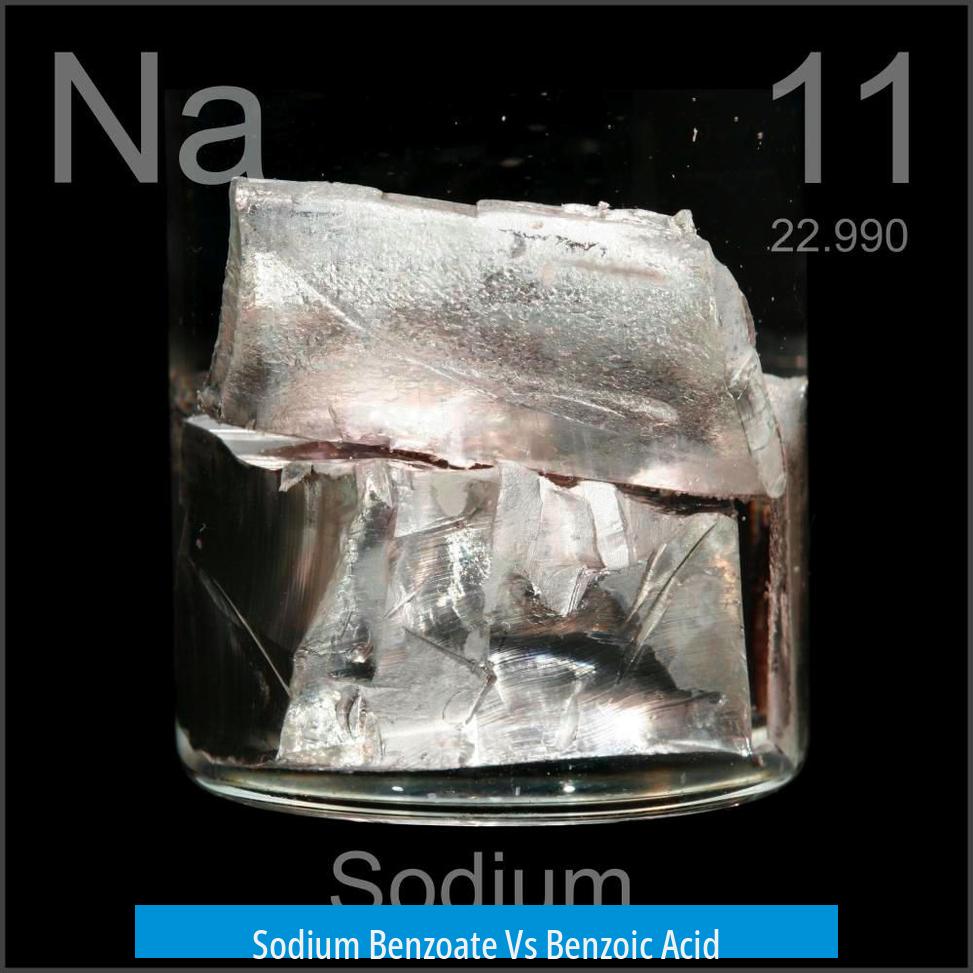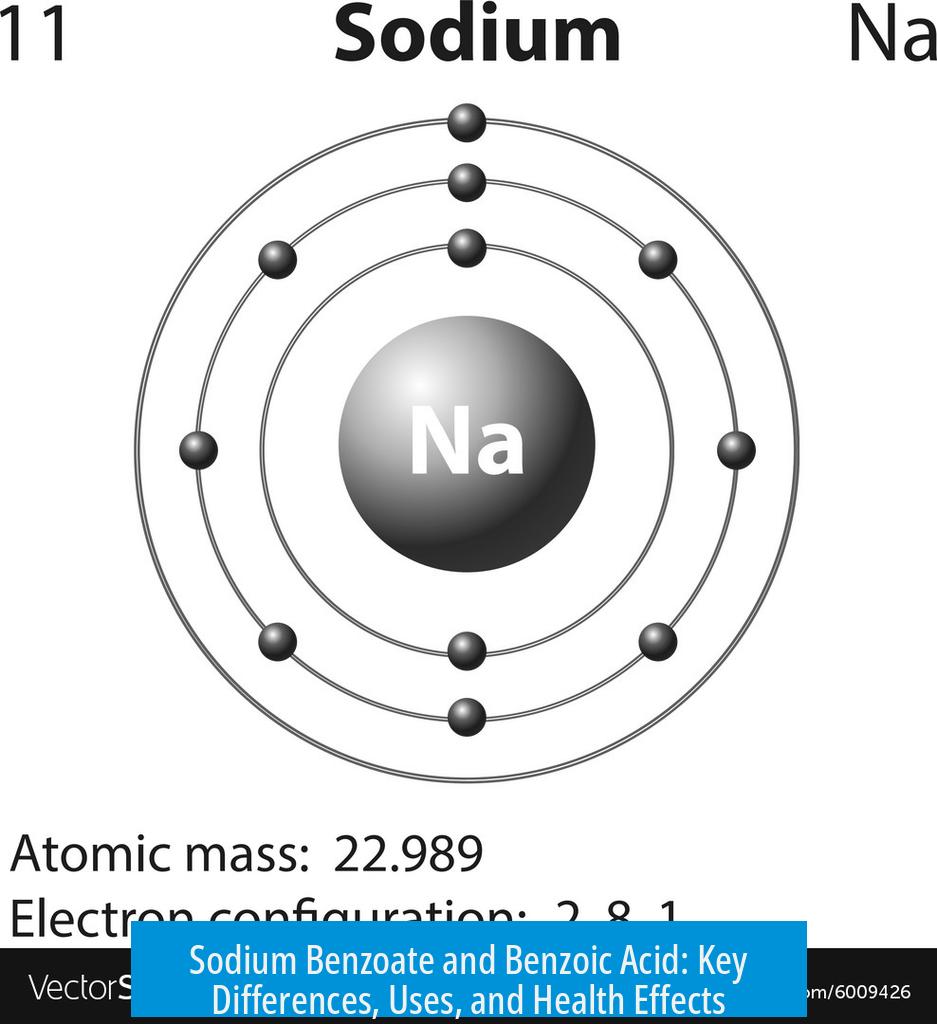Sodium Benzoate Vs Benzoic Acid

Sodium benzoate and benzoic acid differ mainly in their chemical forms, pH effects, and functional roles, but both serve as preservatives and share regulatory limits. Understanding these differences clarifies their uses in food preservation and impact on pH and health.
Chemical Composition and Relationship
Benzoic acid (C7H6O2) is a weak organic acid. Sodium benzoate (C7H5O2Na) is its sodium salt. Sodium benzoate forms when benzoic acid reacts with sodium hydroxide, removing the acidic hydrogen to create the benzoate ion. This process does not separate benzoic acid into components but converts it to a salt, which is more water-soluble.
Regulatory Status and Usage Limits
- Both sodium benzoate and benzoic acid are Generally Recognized As Safe (GRAS) by regulatory bodies.
- Food usage limits typically cap their concentration at 0.1%, whether in acid or salt form.
- Regulations may specify allowable levels either as additive amount or residual amount in food.
Effect on pH and Dissolution
The distinction between the two can affect pH in solution due to their acid-base nature. Benzoic acid partially dissociates in water, influencing pH based on its pKa (~4.19). Sodium benzoate dissociates into sodium ions and benzoate ions, usually raising pH compared to the acid.
In applications like vinegar brines, the Henderson-Hasselbalch equation helps predict equilibrium pH by relating acid (benzoic acid) and conjugate base (benzoate) concentrations. Both benzoic and acetic acids are weak acids with close pKa values, so their interaction influences overall acidity.
For typical usage levels (around 0.1%), the pH effect is minor unless combined with other acidic components in high amounts.
Functional Role in Preservation
Benzoic acid primarily acts as an antimicrobial preservative. Its undissociated form (acidic form) penetrates microbial cell membranes, inhibiting growth. Sodium benzoate, upon dissolving, equilibrates with benzoic acid depending on pH, facilitating preservation.
Health Considerations
Some individuals report adverse reactions to sodium benzoate, such as migraines. This is notable since sodium benzoate is widely used in many dressings and sauces. Symptoms can be severe, including nausea and prolonged discomfort.
Summary of Differences
| Aspect | Benzoic Acid | Sodium Benzoate |
|---|---|---|
| Chemical Form | Weak acid | Sodium salt (benzoate ion + Na+) |
| Solubility | Less soluble in water | Highly water soluble |
| Effect on pH | Lowers pH slightly | May increase or buffer pH |
| Preservative Function | Active in acid form | Equilibrates to acid form at low pH |
| Regulatory Limit | Up to 0.1% | Up to 0.1% |
Key Takeaways
- Both forms are effective preservatives and legally limited to 0.1% in foods.
- Sodium benzoate is a salt of benzoic acid and dissolves more readily in water.
- Benzoic acid’s antimicrobial action depends on acidic conditions.
- pH effects differ but are minimal at permitted levels.
- Some people may experience health effects, notably from sodium benzoate.
What is the regulatory limit for sodium benzoate and benzoic acid in foods?
Both sodium benzoate and benzoic acid are generally recognized as safe (GRAS). Their usage limit in food products is typically 0.1% by weight.
Does sodium benzoate contain benzoic acid?
Sodium benzoate is the sodium salt of benzoic acid, not the acid itself. It dissociates in water to release benzoate ions and sodium ions.
How do sodium benzoate and benzoic acid affect the pH of a solution?
Both are weak acids with similar strengths. Their impact on pH depends on their concentrations and the solution’s buffering system. Usually, small amounts won’t significantly alter pH.
What is the antimicrobial role of benzoic acid compared to sodium benzoate?
Benzoic acid in its acidic form acts as an antimicrobial preservative. Sodium benzoate also preserves, but its efficacy depends on the pH converting it partially into benzoic acid.
Can sodium benzoate cause health issues like migraines?
Some people report migraines triggered by sodium benzoate. Sensitivity varies, but reactions can include nausea and severe headaches for affected individuals.





Leave a Comment